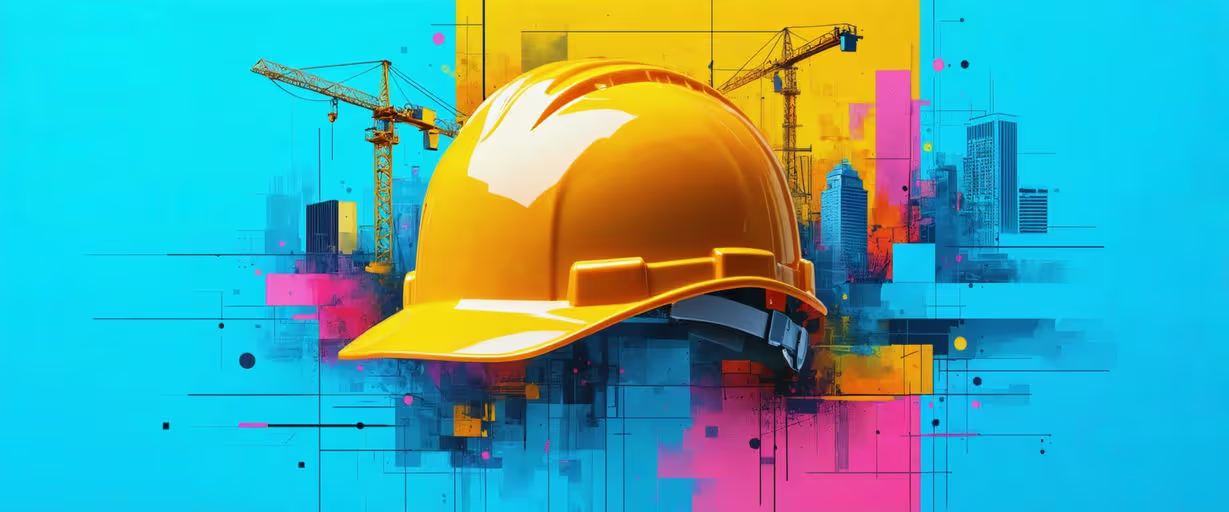All Posts
Construction - AI-Powered Construction Safety & Compliance
How AI Automates Safety Policy Enforcement in Construction

Discover how AI automates safety policy enforcement in construction. From predictive analytics to real-time hazard detection, AI enhances compliance & efficiency.
Project managers juggle tight deadlines, extensive paperwork, and the constant challenge of keeping their teams safe. By exploring how AI automates safety policy enforcement in construction, we can find solutions that not only improve safety but also streamline processes.
Datagrid's data connectors offer a way to seamlessly integrate AI into construction management platforms, simplifying task automation and enhancing safety protocols. By leveraging Datagrid's solutions, construction teams can reduce accidents, improve compliance, and focus on delivering successful projects.
Transforming Safety Policy Enforcement
Overview of AI Technology in Construction Safety
AI mimics human intelligence in tasks like seeing, deciding, and recognizing patterns. In the context of automating safety policy enforcement in construction, this means sharper hazard detection and smoother safety procedures. By integrating AI into existing systems, companies can leverage technologies like 360-degree cameras, machine learning algorithms, and object recognition software.
These tools constantly scan the environment, flagging moving equipment, spotting missing protective gear, and highlighting structural concerns in real time. Rapid hazard identification can significantly reduce accidents while boosting compliance.
Predictive analytics takes it a step further, merging historical project data with live information like changing weather patterns and signs of worker fatigue. With this knowledge, AI systems warn teams about potential issues, cutting down the guesswork in on-site management. Solid forecasting also helps align schedules with safety regulations before problems escalate.
Automating Risk Mitigation
Another advantage of AI in construction is automating risk mitigation. By automating data tasks, AI platforms sift through massive data sets—past incidents, current site layouts, and real-time operational metrics—to prioritize threats and guide immediate decisions. The result? Fewer human errors and more time for managers to focus on critical oversight.
These platforms also team up with 360-degree cameras and object recognition to detect anomalies quickly. If a hazard pops up—like unsecured scaffolding or a slipping worker—the AI sends alerts to supervisors for swift action.
Benefits of AI in Automating Safety Policy Enforcement in Construction
Machine learning algorithms are great at improving data analysis and flagging operational irregularities. They analyze environmental factors, equipment performance data, and behavior patterns to detect early warning signs of mechanical failures or unsafe conditions.
Organizations leveraging AI for safety policy enforcement in construction often see improved incident rates. AI technologies are changing construction by improving onsite safety, reinforcing compliance, and lowering costs. Automated systems reduce manual errors and catch risks faster than outdated manual inspections, helping teams prevent accidents.
Reduction in Accidents and Improved Compliance
With real-time threat detection and predictive modeling, AI can spot issues before they escalate. Sensors identify workers not wearing helmets or harnesses, and facial recognition detects signs of drowsiness during late-night shifts.
AI-powered platforms provide snapshot views of ongoing projects, improving data management and highlighting violations as they happen. They channel real-time data from cameras, sensors, and mobile devices into dashboards that construction managers can check anytime. Faster actions lead to fewer delays, fewer injuries, and less chance for a minor oversight to turn into a bigger problem.
By spotting risks quickly, teams can address them immediately—boosting compliance with OSHA standards and helping crews stay on schedule.
Challenges and Limitations
AI's reliance on massive datasets raises privacy concerns. Training algorithms often involves sensitive worker details, so it's crucial to build privacy protections from the start. While AI can provide real-time insights, regulations like the Privacy Act require strict controls over how data is collected, stored, and shared. Conducting a thorough privacy impact assessment (PIA) can uncover hidden issues and shape smarter security practices.
Integration challenges can arise when incorporating AI systems into existing workflows. Every construction firm has unique procedures and legacy software. Aligning AI models to real-world jobsite conditions requires collaboration between domain experts and AI specialists, along with comprehensive employee training.
Regulatory and Implementation Barriers
AI often advances faster than policies can keep up. This creates compliance gray areas where companies may struggle to align global mandates—like the General Data Protection Regulation (GDPR)—with daily operations. The lack of industry-wide standards complicates interoperability between new AI tools and older systems. Adapting procedures and investing in compliance reviews are necessary to keep projects within legal and ethical boundaries.
Managing Human-AI Collaboration
AI should enhance human oversight, not replace it. Clear role definitions keep managers in control of critical decisions. Effective collaboration involves specialized training, improving decision-making by making sure staff understand how to interpret AI outputs and step in when technology flags hazards. This balanced approach combines human judgment with AI speed, reinforcing accountability at every phase.
How Agentic AI Automates Safety Policy Enforcement
For project managers juggling jobsite deadlines and heavy paperwork, Datagrid's data connectors and AI agents offer a practical solution. By syncing with core construction management platforms like Procore, PlanGrid, or Autodesk BIM 360, Datagrid automates RFPs, submittals, change orders, and daily reports, automating documentation processes.
This not only simplifies task automation but also enhances safety policy enforcement in construction, allowing for less manual data entry and fewer communication gaps.
AI agents cross-reference incoming bid documents with historical data, spotting red flags before they reach a manager's desk. Tracking permit statuses and deadlines across multiple locations becomes painless with automated updates.
Beyond tools built specifically for construction, Datagrid connects with Microsoft Project and Primavera P6, helping teams access real-time schedules and resource allocations without switching platforms. Linking to Sage 300 or QuickBooks streamlines cost tracking and forecasting.
Automating resource-draining tasks offers significant advantages:
- Document Management: AI agents scan and organize submittals, RFIs, and change orders, pulling key points and routing them to the right people.
- Safety Policy Enforcement: Datagrid links to safety management systems to monitor incident reports, equipment certifications, and worker credentials, triggering alerts for any shortfalls.
- Progress Tracking: Automated daily reports and schedule updates let the AI highlight delays in near real time.
- Communication: Integrations with Slack and Microsoft Teams ensure immediate alerts when RFI responses or safety issues pop up.
Simplify Construction Task Management with Agentic AI
Ready to revamp your project workflows? Datagrid brings:
- AI-driven RFP analysis
- Automated submittals
- Real-time insights directly into Procore, PlanGrid, BIM 360.
This means streamlined processes and quicker troubleshooting, leaving your team free to focus on what matters most—including enhancing safety policy enforcement in construction.
See how AI can lighten your load while helping you deliver safer, better-managed construction projects.











